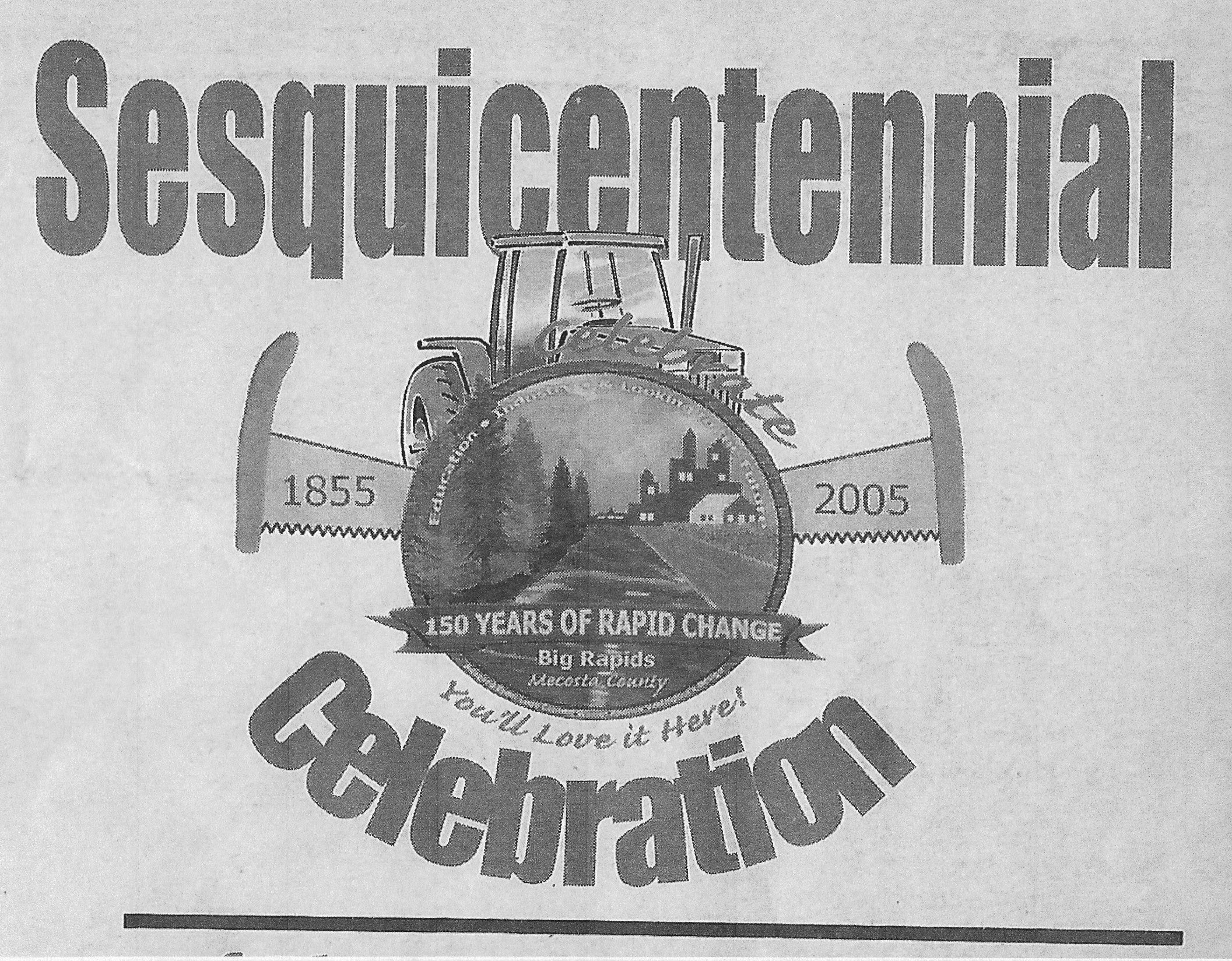
Part V - Government, a supplement to the Big Rapids Pioneer Newspaper. Used with permission.

THE LIFE OF A SHANTY BOY
By Jo Gray - Special to the Pioneer
"The Woodsman stands and gazes upon the massive pine and thinks only of how many logs it will make." (John W. Maurice)
The great white pine forests of Mecosta and surrounding counties were said to be the best and richest of Michigan markets reached as far as Europe and the Oriant. Michigan pines rebuilt Chicago after the big fire of 1871 and was used to build log homes for the pioneers settling in newly opened territories. The value of pine outstripped the gold rush of California. Expected to take 500 years to harvest, the pine forests of Michigan were gone in 60 (1840-1900). A few men became enormously wealthy; the majority came poor and left poor.
In his book, "The Shanty Biys," John W. Maurice described the nineteenth century logger as "usual generous, brave, and a natural gentleman" known in the camps as a shanty boy. The word "lumberjack" was first used in 1896 and became more popular in the early twentieth century. Maurice, a journalist from a Saginaw newspaper, tried to show the better side of the shanty boy, but to the townspeople, when they arrived for a weekend, they were "tearing the town to pieces" with fighting and drinking.
A trainload of men headed to work in the lumber camps were a "melting pot of laborers" (American, French, Germans, Swedes, Irish, English, Pol4es, Indians and Colored). Clad in heavy woolen clothing, the men passed the bottle from hand to hand, smoked and sang-joked-argued in their native tongue. It was a noisy ride to camp. Arriving at the station, clothing bags called "turkeys" were slumg over their shoulders, to be loaded on a tote and drawn into the woods by a team of horses while the men hiked 10 to 20 mikles from town to camp.
The season in camp lasted from Sept. 1 to April 1. Ten million board feet of lumber required 100 men and 12 teams with a two mile haul. "Winter woods were beautiful; but the work was rugged, the life monotonous, the food coarse, the hours long, the pay low." (Burton Historical Collection)
The first step in setting up camp was to provide for water, shelter, and conveniences. Next temporary shelters were constructed for the cook and the blacksmith. And then; "tote roads" were cut and blazed through the camp. For the first 10 to 12 days, the men lived in canvas or hemlock bough shelters while preparation continued with construction of principal buildings; a cook and dining camp 65X35 feet, a bunk camp 60X30 feet with sleeping room for 100 men, a barn and stable with stalls for 18 teams and room for hay and oats, a blacksmith and tinker shop where massive sleighs were made and all tools kept in repair, the company store, and the van/office for the foreman and scaler.
Once the bunkhouse was completed, the walls were adorned with pictures and paper ornaments. There were curtains and foir every four men a looking glass, comb and brush. Tiers of bunks lined three sides of the building; a gigantic five foot stove in the center gave warmth and comfort when howling storms raged outside. Strung around the stove pipe on long poles hung wet clothing of the day ... bunches of socks, strings of shoes and shoepacs "pendant in all directions."
A hanty boy's day began at 4 a.m. when every man rolled out of his bunk. By 4:30, the horn blew for a hearty breakfast and plenty of hot coffee or tea. At 5 a.m. they day's wprl began with men at their several stations. The "choppers" cut nicks in the trees about four inches; the "sawyers" sawed the tree down; the "swampers" trimmed off the branches; the "shredders" snaked the logs to skids where they were piles 20 feet high ready for the "loaders" and "teamsters". At noon, the horn blew for lunch in the woods and a 15 minute break.
After an arduous day, a generous and filling evening meal, the men were ready for some merriment, card playing, singing, and sometimes "stag" dancing to the music of the camp fiddler. A Saturday night at camp was more of a celebration with vaudeville performances and game like "shuffle brogue" and "hunt the slipper." No drinking was allowed in camp. Some camps required Sunday to be a day of quiet and perhaps to listen to "lectures". Usually it was a day for the men ti do laundry, do crumb chasing, and read or write letters.
After the river-hog drives in the spring, some men took work in the mills.
Many of them chose to travel from saloon to saloon and remain "bums" until a woods foreman sought them out for work in the next season. When timber was denuded from the holdings, the operators moved to more attractive stands leaving deserted homes, empty stores, and abandoned families. Mecosta County became the "stump country, the cut-over lands that the lumberjacks of the 70s and 80s had left desolate behind them ..." (Russell Kirk)
"Abundant to all needs of man, how poor the world would be without wood ... it spans rivers, builds homes and heats in winter. Men have walked on it, slept in it, sat on wooden chairs at wooded tables. From cradle of wood to coffin of wood, the life of man has been encircled by it." (Eric Sloane)
Return to Mecosta sesquicentennial Page
Return to Home Page


